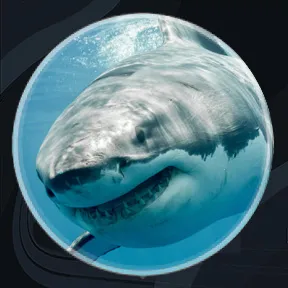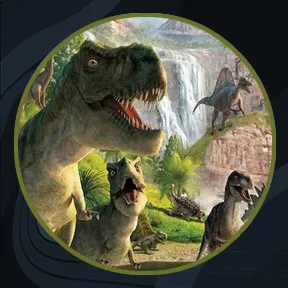Nat Geo Wild | Mosasaurs 101
Mosasaurs were Earth's last great marine reptiles. Learn about the surprising places they'd hunt, how some species dwarfed even the Tyrannosaurus rex, and how key physical adaptations allowed these reptiles to become a prehistoric apex predator.
The earliest fossils of Mosasaurus known to science were found as skulls in a chalk quarry near the Dutch city of Maastricht in the late 18th century, which were initially thought to have been the bones of crocodiles or whales. One skull discovered around 1780, which was seized by France during the French Revolutionary Wars for its scientific value, was famously nicknamed the "great animal of Maastricht".
In 1808, naturalist Georges Cuvier concluded that it belonged to a giant marine lizard with similarities to monitor lizards but otherwise unlike any known living animal. This concept was revolutionary at the time and helped support the then-developing ideas of extinction.
Cuvier did not designate a scientific name for the new animal, and this was done by William Daniel Conybeare in 1822 when he named it Mosasaurus in reference to its origin in fossil deposits near the Meuse River. The exact affinities of Mosasaurus as a squamate remain controversial, and scientists continue to debate whether its closest living relatives are monitor lizards or snakes.
Traditional interpretations have estimated the maximum length of the largest species, M. hoffmannii, to be up to 17.1 meters (56 ft), making it one of the largest mosasaurs, although some scientists consider this an overestimation with recent estimates suggesting a length closer to 13 meters (43 ft).
The skull of Mosasaurus was equipped with robust jaws capable of swinging back and forth and strong muscles capable of powerful bites using dozens of large teeth adapted for cutting prey. Its four limbs were shaped into robust paddles to steer the animal underwater.
Its tail was long and ended in a downward bend and a paddle-like fluke. Mosasaurus was a predator possessing excellent vision to compensate for its poor sense of smell, and a high metabolic rate suggesting it was endothermic ("warm-blooded"), an adaptation only found in mosasaurs among squamates.
There is considerable morphological variability across the currently-recognized species in Mosasaurus, from the robustly-built M. hoffmannii to the slender and serpentine M. lemonnieri, but an unclear diagnosis (description of distinguishing features) of the type species M. hoffmannii led to a historically problematic classification.
As a result, more than fifty different species have been attributed to the genus in the past. A redescription of the type specimen in 2017 helped resolve the taxonomy issue and confirmed at least five species to be within the genus. Another five species still nominally classified within Mosasaurus are planned to be reassessed in a future study.
Fossil evidence suggests Mosasaurus inhabited much of the Atlantic Ocean and the seaways adjacent to it. Mosasaurus fossils have been found in places as diverse as North and South America, Europe, Africa, Western Asia, and Antarctica. This distribution encompassed a wide range of oceanic climates including tropical, subtropical, temperate, and subpolar climates.
Mosasaurus was a common large predator in these oceans and was positioned at the top of the food chain. Paleontologists believe its diet would have included virtually any animal; it likely preyed on bony fish, sharks, cephalopods, birds, and other marine reptiles including sea turtles and other mosasaurs. It likely preferred to hunt in open water near the surface.
From an ecological standpoint, Mosasaurus probably had a profound impact on the structuring of marine ecosystems; its arrival in some locations such as the Western Interior Seaway in North America coincides with a complete turnover of faunal assemblages and diversity.
Mosasaurus faced competition with other large predatory mosasaurs such as Prognathodon and Tylosaurus, which were known to feed on similar prey, though they were able to coexist in the same ecosystems through niche partitioning.
There were still conflicts among them, as an instance of Tylosaurus attacking a Mosasaurus has been documented. Several fossils document deliberate attacks on Mosasaurus individuals by members of the same species. In fighting likely took place in the form of snout grappling, similarly seen in modern crocodiles today.
















































